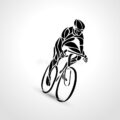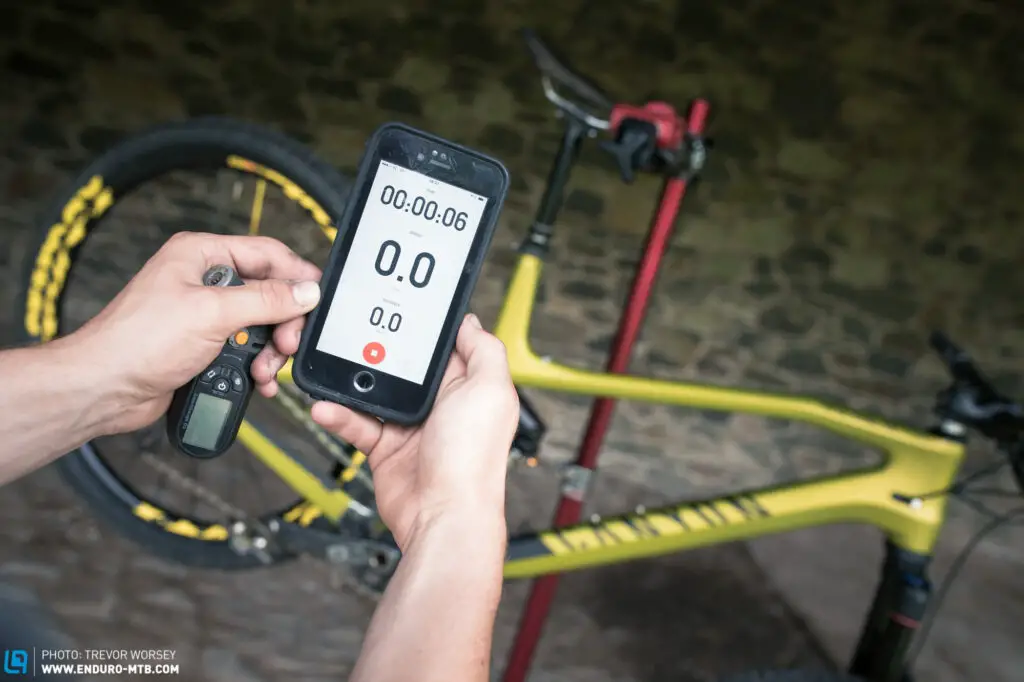The average speed of a mountain bike is about 10 mph or 16 kilometers an hour on singletrack rides. Most mountain bikers will average about 8 mph or 13 kilometers an hour on uphill sections or 12 mph or 19 kilometers an hour on downhill sections.
Electric mountain bikes on singletracks typically average 13 mph or 21 kilometers an hour, with semi-pro and pro mountain bikers averaging 9 mph or 14.5 kilometers on cross-country rides.

How fast can a mountain bike go downhill
How Fast Can a Mountain Bike Go Downhill?
The average speed on a downhill mountain bike is about 17 mph or 27 kilometers an hour with pro mountain bikers attaining up to 30 mph or 48 kilometers an hour on downhill mountain bike rides.
According to a University of Central Lancashire study conducted in 2006 on a course with a 174-meter or 571-foot drop and about 1.7 kilometers or a mile long with technically demanding fire roads and singletrack, the following results.
- The maximum speed was 44 kilometers an hour or 27 mph
- The maximum speed ranged from 33 kilometers an hour or 21 mph to 44 kilometers an hour or 27 mph
- The average speed was 23 kilometers an hour or 14 mph
- The average speed ranged from 17 kilometers an hour or 11 mph to 27 kilometers an hour or 17 mph
A 2012 study involving professional downhill mountain bikers that were involved in the 2010 German Downhill Championships got an average speed of 32 kilometers an hour or 20 mph.
It is important to note that the study involved technically challenging forest roads and single-track trails filled with numerous drop-offs, jumps, and turns over a 370-meter elevation drop and a distance of one mile.
Another thing to note when it comes to mountain bike speed is that the type of bike and terrain may also impact the speeds attained.
On March 19th, 2017 Eric Barone was clocked at 227 kilometers an hour or 141 mph while downhill mountain biking on a prototype designed for the record-setting speed event.
What makes a mountain bike slower than a road bike
As compared to the road bike the mountain bike will often be slower though this to a great extent depends on the terrain on which the bike is ridden.
If you were to put the road bike and mountain bike on a rocky single-track downhill track, the road bike would not be so fast. However, if you put the mountain bike and road bike on a flat paved surface, the mountain bike would never keep up.
Nonetheless, most people who ask why the mountain bike is slower are comparing the two on relatively flat paved surfaces, where the road bike shines.
There are several reasons why the mountain bike is so slow on such surfaces. Some of these include higher rolling resistance due to lower tire pressure and knobby tires, lower gearing, and greater weight of the MTB. Moreover, the mountain bike with its flat handlebars is also less aerodynamic as compared to the road bike.

How to make your mountain bike faster
Regardless of whether you are just looking for speed or are just into racing, you would clearly want to go faster on your mountain bike. To increase the speed of your MTB, follow these tricks and hacks:
Note that these hacks also work for a hybrid bike or road bike
- Select Better Tires
One of the first things to look at is the tread of your MTB tires. You can improve speed by getting less aggressive treads especially if you will not be riding in tough terrains.
If you are no longer a beginner and have enough confidence in your riding skills you no longer need an aggressive tread for better traction. Less aggressive treads with smaller knobs that are more closely spaced will reduce friction and rolling resistance.
- Optimize Tire Pressure
Riding efficiency is significantly impacted by tire pressure as it impacts how much contact there is between the tire and the ground. Low pressure increases the surface area in contact with the ground thus increasing rolling resistance and slowing you down.
To overcome this ensure the tire pressure is right before starting to ride. You can usually find the manufacturer-recommended pressure on the sidewall of the tire. If you are not too sure if the recommended one is a good fit try out different pressures between 25-35 PSI until you find one that fits your riding style.
- Adopt a Tubeless Setup
In addition to fewer flats, tubeless tires are lighter and hence rotate more easily as compared to tube tires. The reduced rotational resistance makes it possible to accelerate and ride faster.
- Ride with Clipless Pedals
This may seem like a no-brainer for a mountain bike enthusiast but for beginners, it isn’t so obvious. Clipless pedals are better than flats as they allow for a more consistent and powerful stroke hence providing maximum balance and control which can translate into more speed.
- Better Lubricate Your Drivetrain
A well-lubricated drivetrain will always be more efficient as it will reduce friction between the different parts. You can then use the energy saved to power the bike thus increasing your speed. Moreover, lube keeps the drivetrain well-maintained and in good shape thus keeping it operating more smoothly.
However, something to take into account is to avoid over-lubrication as getting lube on your brakes and other components might reduce their efficiency.
- Replace Your Chain
Check the chain for wear which often happens over time leaving the component elongated and inefficient. If your mountain bike has more than a dozen sprockets in the rear cassette always replace the chain once it stretches more than 0.5%
The reason for this is that stretched chains do not transfer as much power to the wheels and may often drop while you are riding which means you will have to stop and fix it every few miles or even meters thus making you slower.
- Optimize the Shifting
Configure the cable tension and derailleurs to make for easier shifting. Given that most mountain bikes only have single front chainrings you only have to adjust the rear derailleur.
The thing about smooth shifting is that it makes for more efficient power delivery and riding and reduces the incidence of chain dropping as you can easily jump between the gears whenever you want to.
- Regularly Change the Cassette
Having a worn-out cassette will significantly reduce performance. Moreover, most mountain bike riders will get about 1000 miles out of their cassette. A good rule of thumb is to replace the cassette when it has gone through two or three chains.
You can tell a cassette is worn when instead of a triangular appearance it will have an inward curve where the chain has worn it in. Another tell-tale sign is when you start getting the shark fin-looking sprocket teeth.
- Align Your Brakes
While you need the brakes to slow you down and keep you from flying off the edge of the mountain, you don’t want them slowing down your mountain bike when not called upon to do so.
The most important thing to do when it comes to the brakes is to ensure they are not rubbing any components when not engaged. Sometimes you can tell just by listening to the rubbing sound it makes against the rotor disk if you have disc brakes.
- Tune the Suspension
Perfect suspension is usually a tradeoff between performance and comfort. Ensure that you do not make your suspension too soft as it will use up a lot of energy and result in a less efficient bike. Likewise, one that is too hard will bounce around the trail too much making it hard to balance the bike.
- Find Your Perfect Saddle Position
Set your saddle at the perfect position and height as this will increase pedaling efficiency. Your saddle should be at a height where the heel just reaches the pedal when it is in the down position with the leg completely straight.
- Clean Your Bike
You can spend time replacing and adjusting components on your mountain bike but if you do not clean your bike it may be all in vain. Grime, gunk, dirt, and mud usually get into every crevice of the bike and will usually slow you down if you do not clean it regularly.
You can use soap and hot water to clean up most of the gunk and grime but you can go even further with degreasers and brushes to get everything from the derailleurs, cassette, chain, and front ring.
- Establish a More Aerodynamic Profile
Wear tighter-fitting clothing to speed up runs and lower wind resistance. You could also narrow your grip and lower the handlebars to create more tucked-in positions to reduce drag and increase speed.


